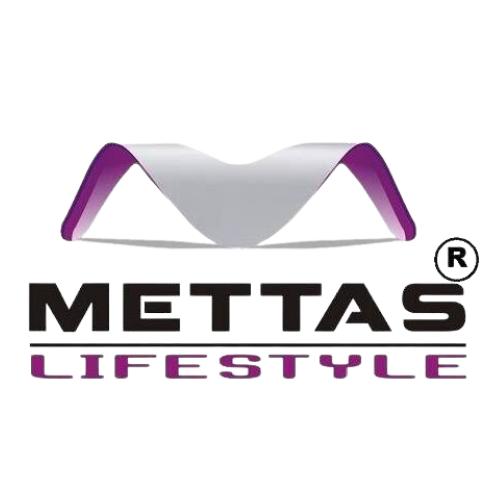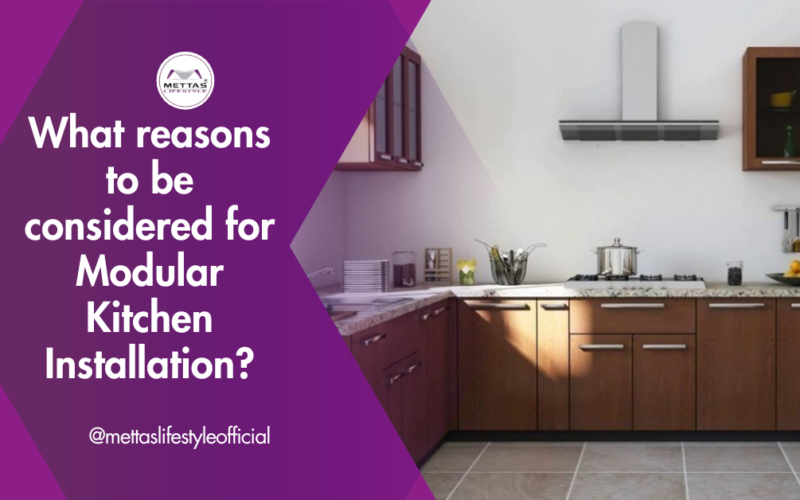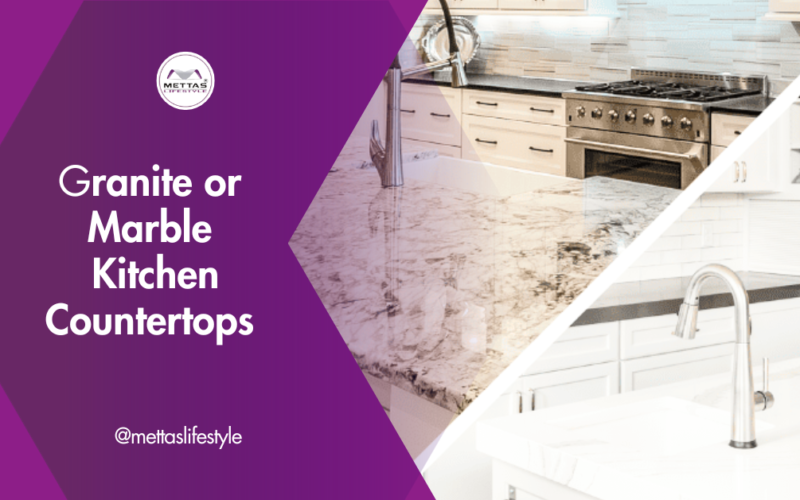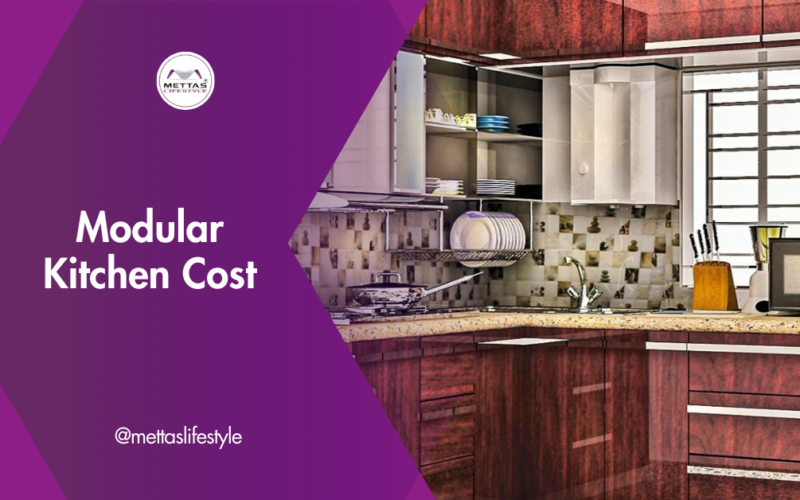

The kitchen is the heart of every home, and at the center of this essential space are the kitchen cabinet. They play a pivotal role in defining the kitchen’s functionality, aesthetics, and overall ambiance. When it comes to choosing the best materials for your kitchen cabinet, it’s not just about durability but also about creating a design that resonates with your style. In this comprehensive guide, we’ll explore a wide range of materials used for crafting kitchen cabinet, delving into their pros and cons, so you can make an informed decision that elevates your kitchen to new heights by Mettas Lifestyle.
Table of Contents
ToggleIntroduction of Kitchen Cabinet Materials

Kitchen cabinet are more than just storage solutions; they are a design statement. The choice of materials for your kitchen cabinet impacts not only their longevity but also the overall look and feel of your kitchen. Before diving into the specifics of each material, let’s take a moment to understand the factors you should consider when making this crucial decision.
Factors to Consider
1. Budget
- Your budget will play a significant role in determining the materials you can choose for your kitchen cabinets. Some materials are more budget-friendly, while others are considered high-end.
2. Aesthetic Preferences
- Your personal style and the overall design theme of your kitchen will guide your choice of cabinet materials. Do you prefer a classic, rustic, modern, or minimalist look?
3. Durability
- Kitchens are high-traffic areas, and cabinets are exposed to constant wear and tear. Durability is a key consideration when selecting cabinet materials.
4. Maintenance
- Different materials require varying levels of maintenance. Some are easy to clean and maintain, while others may need more attention.
5. Environmental Impact
- If sustainability is important to you, consider eco-friendly materials that have minimal environmental impact.
6. Resale Value
- If you plan to sell your home in the future, the choice of kitchen cabinet materials can affect your home’s resale value.
Common Kitchen Cabinet Materials
Now, let’s explore some of the most common materials used for kitchen cabinet, along with their advantages and disadvantages.
1. Solid Wood

Solid wood cabinets are a timeless choice known for their warmth, elegance, and durability. They are often crafted from hardwoods like oak, maple, cherry, and walnut. Here are the pros and cons:
Pros:
- Natural Beauty: Solid wood kitchen cabinet have a timeless and classic appeal, adding warmth and character to any kitchen.
- Durability: When well-maintained, solid wood cabinets can last for decades.
- Versatility: They can be refinished or painted in various colors to match changing decor.
Cons:
- Cost: Solid wood cabinets tend to be more expensive than other materials.
- Maintenance: They may require periodic refinishing or resealing to maintain their appearance.
- Susceptible to Moisture: Solid wood can warp or crack in humid environments.
2. Plywood

Plywood is a versatile and popular choice for cabinet construction. It is made by layering thin sheets of wood veneer and adhesive. Plywood cabinets have their own set of advantages and disadvantages:
Pros:
- Stability: Plywood is resistant to warping and cracking, making it an excellent choice for kitchen cabinet.
- Cost-Effective: It is often more affordable than solid wood while offering similar durability.
- Uniform Appearance: Plywood has a consistent grain pattern, which some people prefer.
Cons:
- Aesthetics: Some homeowners may prefer the natural beauty of solid wood over the uniform appearance of plywood.
- Edges: The edges of plywood cabinets may require edge banding or veneer for a finished look.
3. Particleboard
Particleboard is an engineered wood product made from wood chips, sawdust, and adhesive. It is a budget-friendly option for cabinet construction with its own set of advantages and disadvantages:
Pros:
- Affordability: Particleboard cabinets are among the most budget-friendly options.
- Smooth Finish: They provide a smooth surface that’s ideal for laminates or veneers.
- Stable Dimensions: Particleboard is less likely to expand or contract with changes in humidity.

Cons:
- Durability: Particleboard is less durable than solid wood or plywood and can be susceptible to damage from moisture.
- Limited Customization: It may not hold up well to heavy use or modifications, such as relocating cabinet hardware.
4. MDF (Medium Density Fiberboard)
MDF is another engineered wood product made from wood fibers, wax, and resin. It is known for its smooth surface and versatility. Here are the pros and cons:
Pros:
- Smooth Finish: MDF cabinets have a smooth, uniform surface that’s perfect for painting or veneering.
- Affordability: They are often more budget-friendly than solid wood.
- Customization: MDF can be easily shaped, carved, or routed for intricate designs.
Cons:
- Moisture Sensitivity: Like particleboard, MDF is sensitive to moisture and may swell or warp when exposed to water.
- Not as Durable: It may not withstand heavy wear and tear as well as solid wood or plywood.
5. Laminate

Laminate cabinets are constructed with a base material (often particleboard or MDF) covered by a layer of laminate, a synthetic material. Laminate cabinets have their unique set of advantages and disadvantages:
Pros:
- Variety of Finishes: Laminate comes in a wide range of colors and patterns, allowing for creative design choices.
- Easy Maintenance: Laminate is easy to clean and resistant to stains.
- Affordability: Laminate cabinets are often more budget-friendly than solid wood or plywood.
Cons:
- Durability: Laminate cabinets may not be as durable as wood-based options and can be prone to chipping or peeling.
- Limited Reparability: Once damaged, laminate cabinets are challenging to repair.
- Aesthetic Limitations: Some homeowners prefer the natural look and feel of wood over laminate.
6. Thermofoil

Thermofoil cabinets are constructed by applying a layer of vinyl film to a substrate, often MDF. They are known for their sleek appearance and are a popular choice for contemporary kitchens. Here are the pros and cons:
Pros:
- Sleek Appearance: Thermofoil cabinets have a smooth and contemporary look.
- Affordability: They are often more budget-friendly than solid wood or plywood.
- Easy Maintenance: Thermofoil is easy to clean and resistant to moisture.
- Durability: Thermofoil can be prone to peeling or delaminating over time, especially in areas with high heat or humidity.
- Limited Repair Options: Once damaged, it can be challenging to repair thermofoil cabinets effectively.
- Limited Customization: Thermofoil cabinets may offer fewer customization options compared to wood-based cabinets.
7. Stainless Steel

For a sleek and modern look, stainless steel cabinets are an excellent choice. Stainless steel is known for its durability and resistance to moisture and staining. Here are the pros and cons:
Pros:
- Durability: Stainless steel cabinets are incredibly durable and resistant to rust, corrosion, and staining.
- Hygienic: They are easy to clean and maintain, making them a popular choice for commercial kitchens.
- Contemporary Aesthetics: Stainless steel provides a clean and modern look.
Cons:
- Cost: Stainless steel cabinets tend to be more expensive than wood-based options.
- Scratches: While resistant to stains, stainless steel can scratch easily, which may be more visible on a shiny surface.
- Limited Warmth: Some homeowners find stainless steel to be less inviting than wood.
8. Glass-Front Cabinets

Glass-front cabinets can add a touch of elegance and open up the kitchen space. These cabinets typically have wooden frames with glass panels. Here are the pros and cons:
Pros:
- Aesthetics: Glass-front cabinets showcase your dishware and add an element of sophistication to the kitchen.
- Open Feel: They can make the kitchen feel more open and airy.
- Versatility: You can choose different types of glass, such as clear, frosted, or textured, to achieve the desired look.
Cons:
- Maintenance: Glass-front cabinets may require frequent cleaning to keep the contents visible and dust-free.
- Organization: Since the contents are visible, you need to maintain an organized and clutter-free interior.
- Limited Privacy: Some homeowners prefer the privacy of solid cabinet doors for hiding clutter.
9. Melamine

Melamine cabinets are constructed using particleboard or MDF covered with a melamine resin finish. They are known for their affordability and low-maintenance characteristics. Here are the pros and cons:
Pros:
- Affordability: Melamine cabinets are budget-friendly and offer a wide range of style options.
- Durability: They are resistant to stains, moisture, and warping.
- Easy Maintenance: Melamine surfaces are easy to clean and maintain.
Cons:
- Limited Customization: Melamine cabinets may offer fewer customization options compared to wood-based cabinets.
- Durability: While durable, they may not be as resilient as solid wood or plywood cabinets.
- Aesthetics: Some homeowners prefer the natural look of wood over melamine.
Conclusion
Choosing the right material for your kitchen cabinets is a significant decision that affects the functionality and aesthetics of your kitchen. Each material has its own set of advantages and disadvantages, making it essential to align your choice with your budget, style preferences, and lifestyle.
Remember that the best choice for your kitchen cabinets depends on your unique needs and priorities. Solid wood offers timeless beauty, while plywood and MDF provide durability at a lower cost. Laminate and thermofoil offer various design options, while stainless steel delivers a modern and hygienic solution. Glass-front cabinets showcase your collections, while melamine offers budget-friendly durability.
To make an informed decision, consider consulting with a professional kitchen designer or contractor who can help you navigate the options and create a kitchen that reflects your style and meets your practical requirements. Your kitchen cabinets are not just functional; they are an essential part of your home’s character and charm. Choose wisely, and your kitchen will become the heart of your home for years to come.
Related topics you must read : 2023’s Ultimate Guide to the Best Kitchen Cabinet Color





4 comments. Leave new
[…] topics you must read: The Best Kitchen Cabinet […]
[…] topics you must read: Best Kitchen Cabinet […]
[…] topics you must read: Best Kitchen Cabinet […]
[…] Related topics you must read: The Best Kitchen Cabinet Materials […]